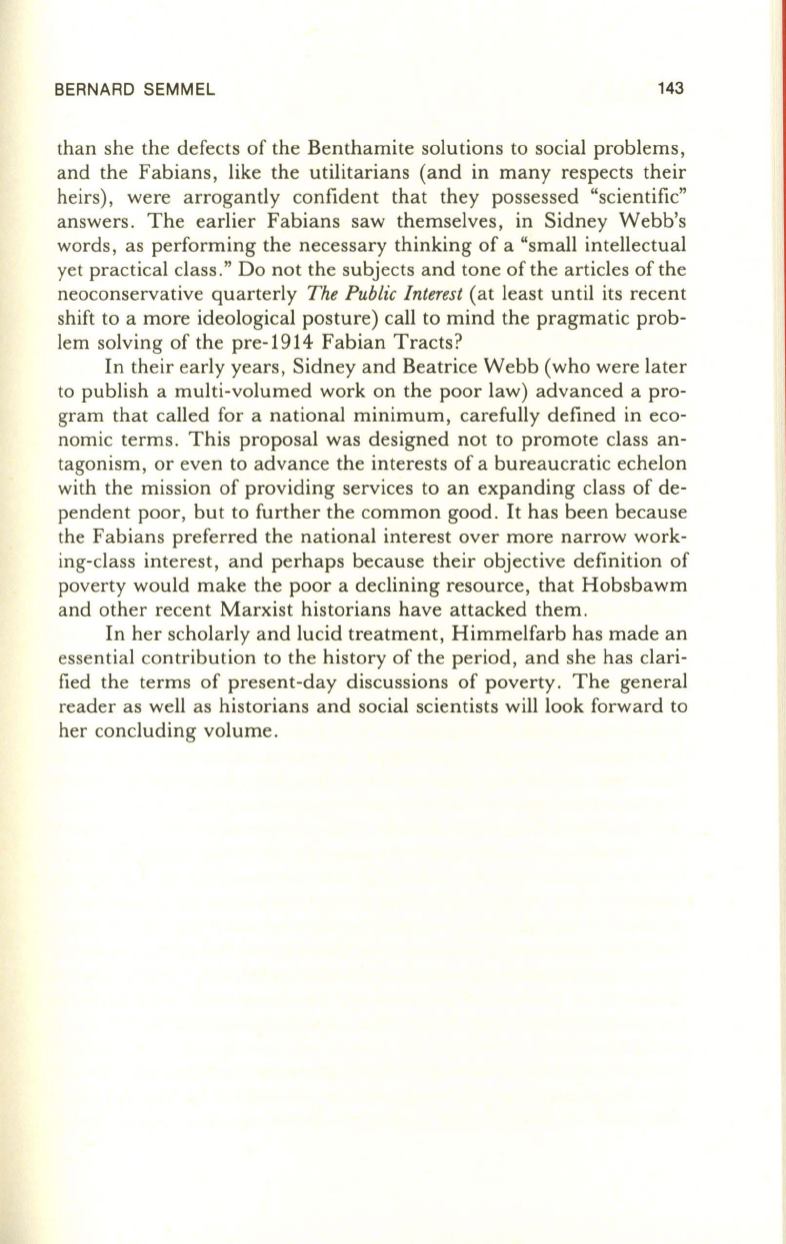
BERNARD SEMMEL
143
than she the defects of the Benthamite solutions to social problems,
and the Fabians, like the utilitarians (and in many respects their
heirs), were arrogantly confident that they possessed "scientific"
answers. The earlier Fabians saw themselves, in Sidney Webb's
words, as performing the necessary thinking of a "small intellectual
yet practical class." Do not the subjects and tone of the articles of the
neoconservative quarterly
The Public Interest
(at least until its recent
shift to a more ideological posture) call to mind the pragmatic prob–
lem solving of the pre-1914 Fabian Tracts?
In their early years, Sidney and Beatrice Webb (who were later
to publish a multi-volumed work on the poor law) advanced a pro–
gram that called for a national minimum, carefully defined in eco–
nomic terms. This proposal was designed not to promote class an–
tagonism, or even to advance the interests of a bureaucratic echelon
with the mission of providing services to an expanding class of de–
pendent poor, but to further the common good.
It
has been because
the Fabians preferred the national interest over more narrow work–
ing-class interest, and perhaps because their objective definition of
poverty would make the poor a declining resource, that Hobsbawm
and other recent Marxist historians have attacked them.
In her scholarly and lucid treatment, Himmelfarb has made an
essential contribution to the history of the period, and she has clari–
fied the terms of present-day discussions of poverty. The general
reader as well as historians and social scientists will look forward to
her concluding volume .


